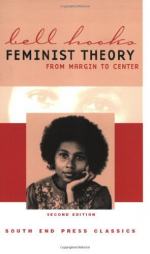
|
| Name: _________________________ | Period: ___________________ |
This quiz consists of 5 multiple choice and 5 short answer questions through Chapters 8 and 9.
Multiple Choice Questions
1. In the author's view, which prejudices is it important for women of color to transcend?
(a) Prejudices against illiterate women.
(b) Prejudices against academics and/or intellectuals.
(c) Prejudices against their mothers' generation.
(d) Prejudices against rich women.
2. In the Preface to the second edition, what is the first factor considered by black parents when a child is born, according to the author?
(a) Gender, then size.
(b) Race, then gender.
(c) Gender, then race.
(d) Race, then size.
3. According to the author, what does society often teach women about what it means to be a woman?
(a) That to be female is to be important.
(b) That women should be silent.
(c) That to be a woman is easier than being a man.
(d) That to be female is to be a victim.
4. How does the author view housework?
(a) As demeaning.
(b) As women's work.
(c) As extremely tiring.
(d) As creative and life-affirming-sometimes more so than work outside the home.
5. How is violence often represented in western culture?
(a) As something only practiced by villains.
(b) As reprehensible, no matter who commits it.
(c) As a symbol of life.
(d) As sexually titillating, and even associated with love and romance.
Short Answer Questions
1. What does the author say about the statement: "I am a feminist"?
2. Why does the author believe that it is important to define feminism from within the movement?
3. According to the author, how are joint analyses of race, class, and gender seen today?
4. In Chapter Six, what does the author claim women active in feminist movement have been ambivalent about?
5. What was the shared feeling that helped define sisterhood in the early years of the movement, according to the author?
|
This section contains 402 words (approx. 2 pages at 300 words per page) |

|




